Farewell to an Antarctic Legend: Rolf Bjelke
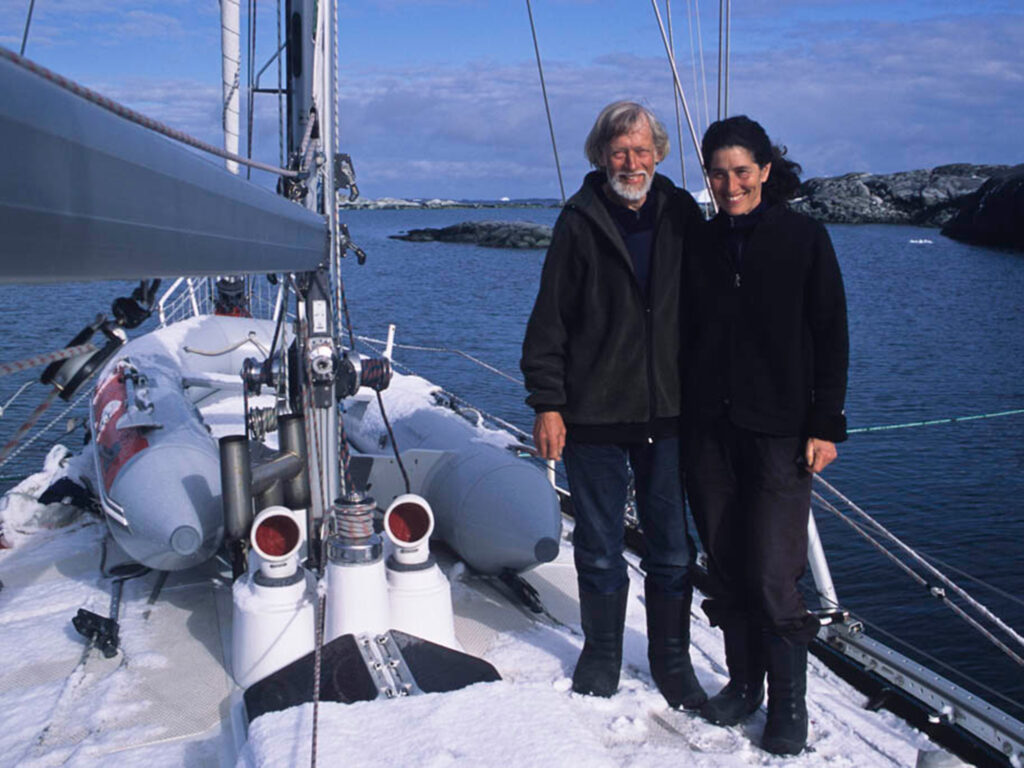
It is difficult to pinpoint when Antarctica opened “mentally” as a cruising destination. It might have been Bill Tilman’s voyages on Mischief and, in a different linguistic sphere, Jerome Poncet’s on his Damiens. In the late ’60s and early ’70s, they really were Antarctica’s yachting pioneers. Or it might have been David Lewis single-handing Icebird or Gerry Clark’s crazy Totorore voyage, even though, 40 years on, we are slowly losing their stories and names.
These were tricky, probing voyages into an outlandish icescape with a substantial dose of daring. These were voyages into an away-ness, where the outcome wasn’t known. With no support net, no weather forecasts, often no communication, and certainly no GPS. Being from the last century, those voyages were made in a media black hole. If anything did make it out, it was severely delayed—and definitely not in live blogs, but in an old-fashioned book. These early books were light on pictures, heavy on words and did little to change the fact that sailing as a couple to Antarctica was virtually off the mental map.
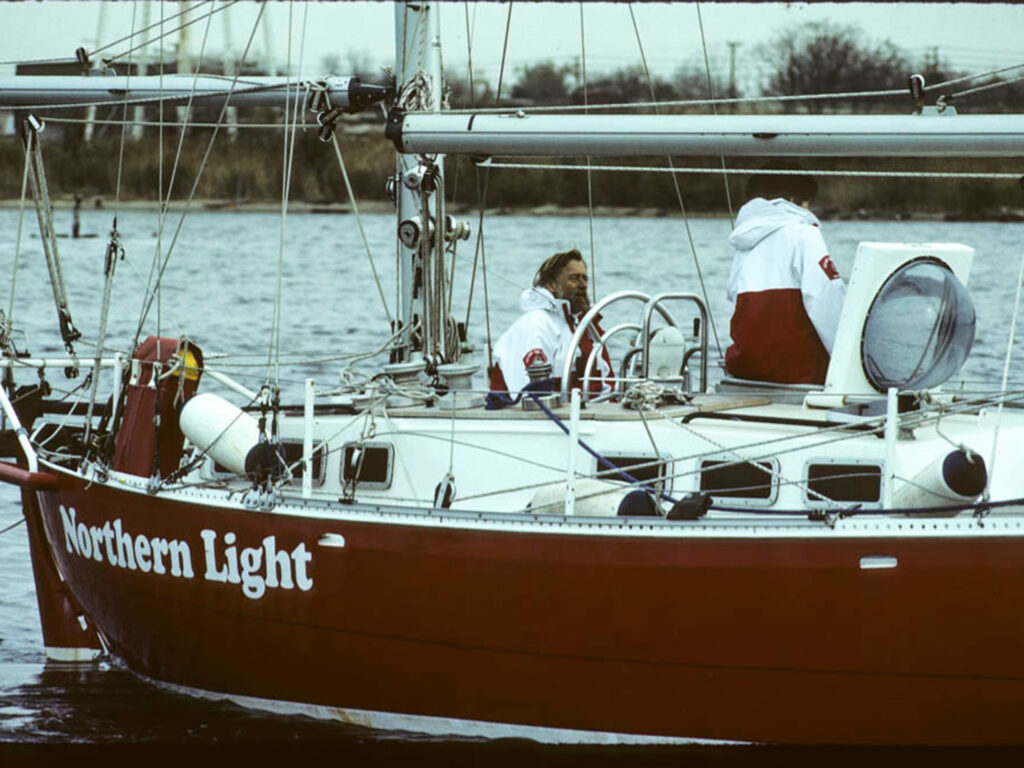
Then Rolf Bjelke and Deborah Shapiro appeared on the polar horizon. For us English-speaking sailors, it was their 1986 book about their Arctic to Antarctic voyage aboard their 40-foot steel ketch Northern Light that broke the ice of high-latitude sailing. For it differed, it was predominantly visual, starring their powerful and conspicuous red double-ended Northern Light. Their visceral images allowed us to enter a wilderness world still frozen to our minds. From then on, and for more than the following 30 years, Rolf and Deborah’s many voyages into the high latitudes would set—and still set—the highest standard for anybody with a notion to sail into the inhospitable regions of the Big South.
Hearing the news of Rolf’s recent passing, I think back to my tacit inhibition when I first met him and Deborah in 1986, their book having just been published. I lived on Wanderer III and was building wooden boats in Norway’s Risør. In need of some time off, they had sailed across from Sweden, where they had been preparing Northern Light for a next adventure: an over-wintering in Antarctica. What imprinted on me was just how carefully they washed, folded and stored their inflatable dinghy in such a measured, unhurried and meticulous way for what was a mere 60 nautical-mile summer trip back across the Skagerrak to Sweden. If this was how you had to approach sailing to Antarctica, I had a huge amount to learn.
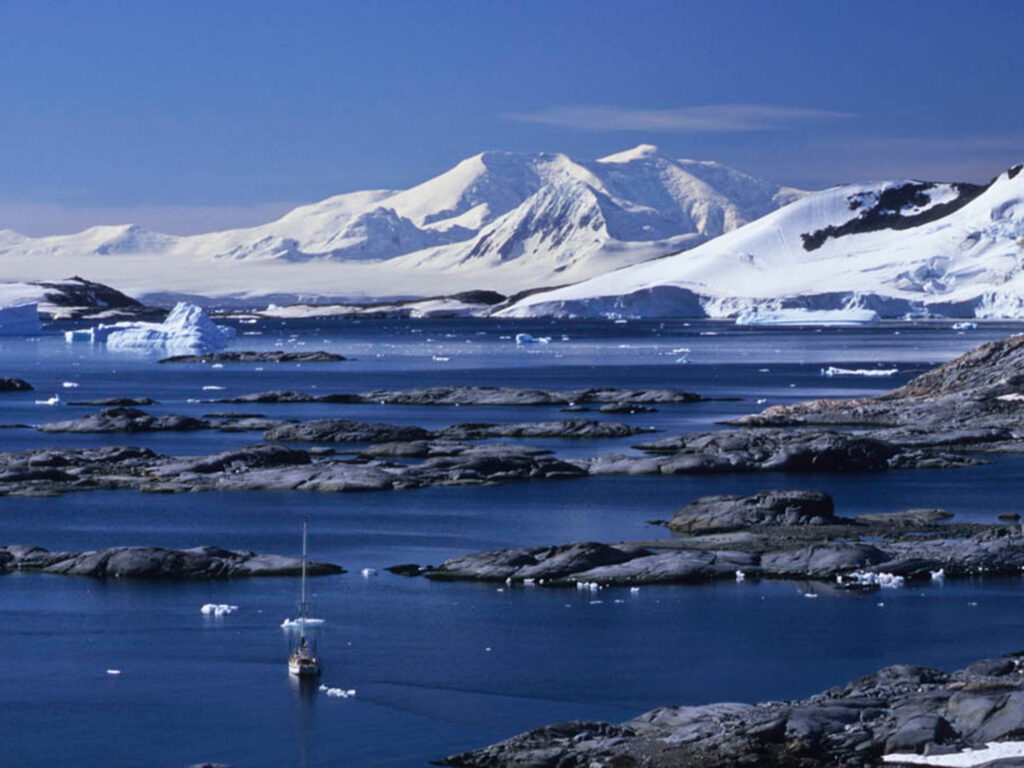
Three years later, my lessons continued on the hard December frosts and morning ice of North Carolina’s ICW. After a chance meeting in Norfolk, Virginia, Wanderer and Northern Light entered into a magical rhythm on our Intracoastal route south. For five memorable days, having the slower boat, I would make a head start each morning. They would then overtake me during the day and find an anchorage for the night, where I’d anchor beside them and row across. Dinner would soon be ready. And then, during the long evenings, the pathways to polar sailing were explained. Each evening, ice-honed experiences, particular design features, storm tactics in long keeled boats (“Remember: Keep them running fast,” Rolf liked to say), photography, books, writing, chocolate, wine—almost everything came onto the table. Each morning I would start early again, and again. Until we parted—them to eventually over-winter in the Antarctic, and I to join Kicki in the Caribbean. Not that I knew it then, but they had become the godparents of where I was eventually headed.
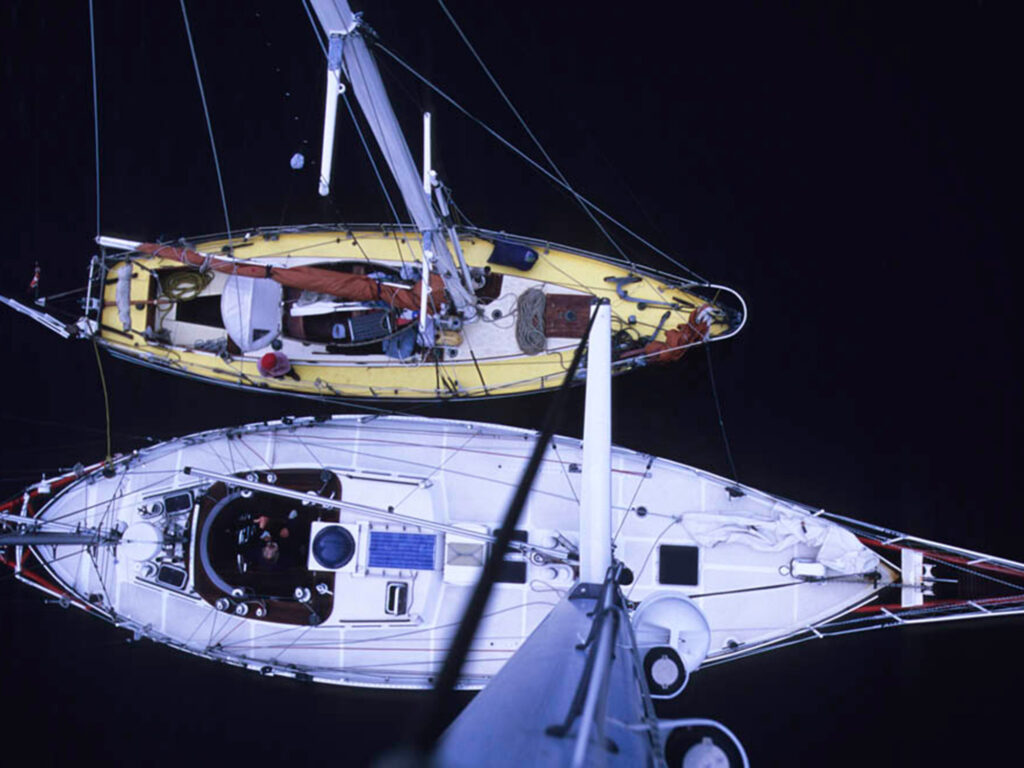
I loved the long-keeled Northern Light, both in its looks and in its power. Based on Moitessier’s round-the-world Joshua design, she was nothing less than a beautiful sailing machine. She was their home too, and they had fine-tuned her to near perfection in order to spend long periods in areas where nature was rawest. Their love of the wild stood at the core of their sailing. And very few of us have managed to live this love and weave it into a lifelong chord at which they pulled as equals. They were equals in their organizational stamina and exactitude, their concentration on details, their meticulous preparedness. But it is especially the way they met the challenges on and off the sea which stands out. Their absolute parity regarding the responsibilities and skills of navigation, boat maintenance, sailing, writing, photography, filming and their successful presentations, all as an independent, self-reliant, two-person team in the non-digital era, was exceptional. Their sailing won them the Blue Water Medal in 1984, their filming a festival prize in Cannes, their multimedia presentations the admiration of many cruisers.
Seventeen years after our shared passage on the ICW, I had passed the test. One moment I was watching a royal albatross, the next I saw Northern Light sailing into Wanderer’s anchorage. By then, Kicki had long since joined and the wilderness areas of the South had become our cruising ground. But what a stunning surprise it was to find ourselves being the only two yachts in New Zealand’s subAntarctic Auckland Islands. Wanderer, though much adapted, may perhaps not have been quite as perfectly equipped as Northern Light, but definitely the four of us were. Decades of sailing had taught us how important it is, in places like this, to give each other space to experience what we had come here for: the sense of being there, to be allowed to be alone in such a primordial web of natural sounds and winds. But then, yes, also to find moments together, share dinners and Deborah’s Swedish birthday cakes. We were clearly on the same page when it came to balancing the social and the remote.
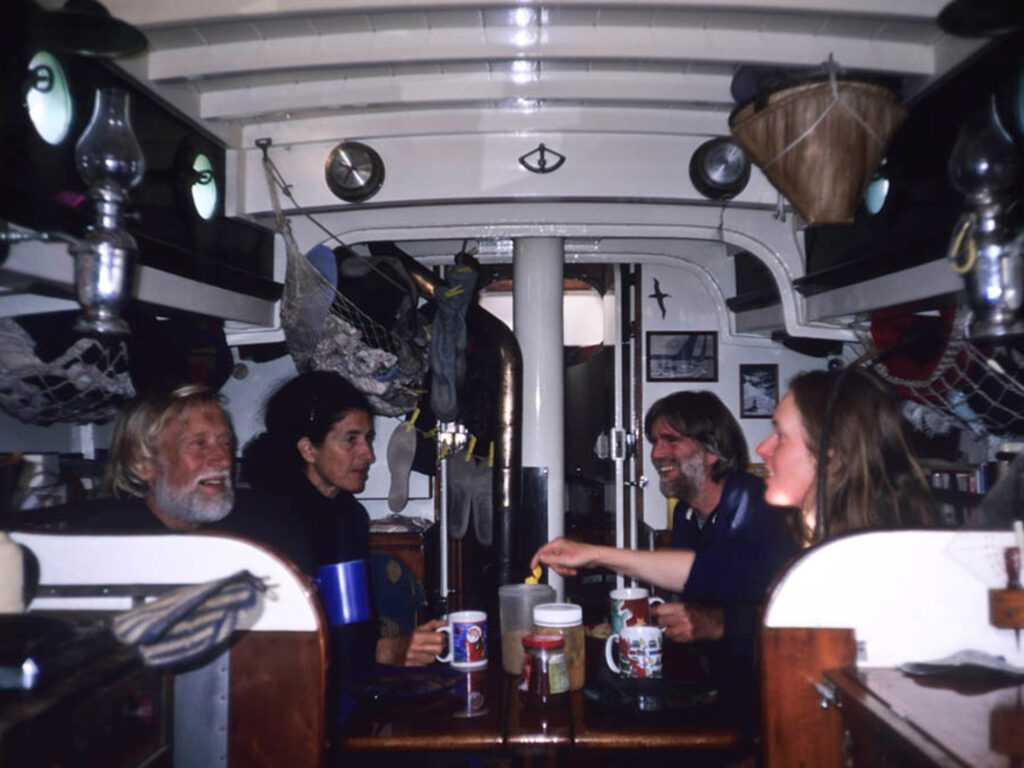
When we visited Deborah and Rolf last year in Sweden, Northern Light had long been sold and Rolf was 86 years old. His body was giving way, but his mind was as sharp as the freshly frozen ice in the first days of their over-wintering in Antarctica’s Hovgaard Bay. There was still the same determination and mental acuity in him that had shaped his life. Just as this most-loved place had done or, simply, the beauty of a polar summer-night’s light. Hovgaard Bay was where the four of us had seen each other last, in 2007, when their extensive final voyaging project, a circumnavigation in the Southern Ocean, had brought them back for some summer months.
And it was in Hovgaard Bay, in the midst of their Antarctic winter, that they had choreographed a photograph which amongst all their images catches the essence of what they were doing better than any other: It shows Northern Light, red hull, sails set, spinnaker filled, held in a serene, sunlit Antarctic scene, gripped by the whitest of snows. For years, it hung in marine workshops and chandleries all over the world. Once you had seen it, it entered the mind and never left. Also mine. They had found the ultimate balance between planned and playful.
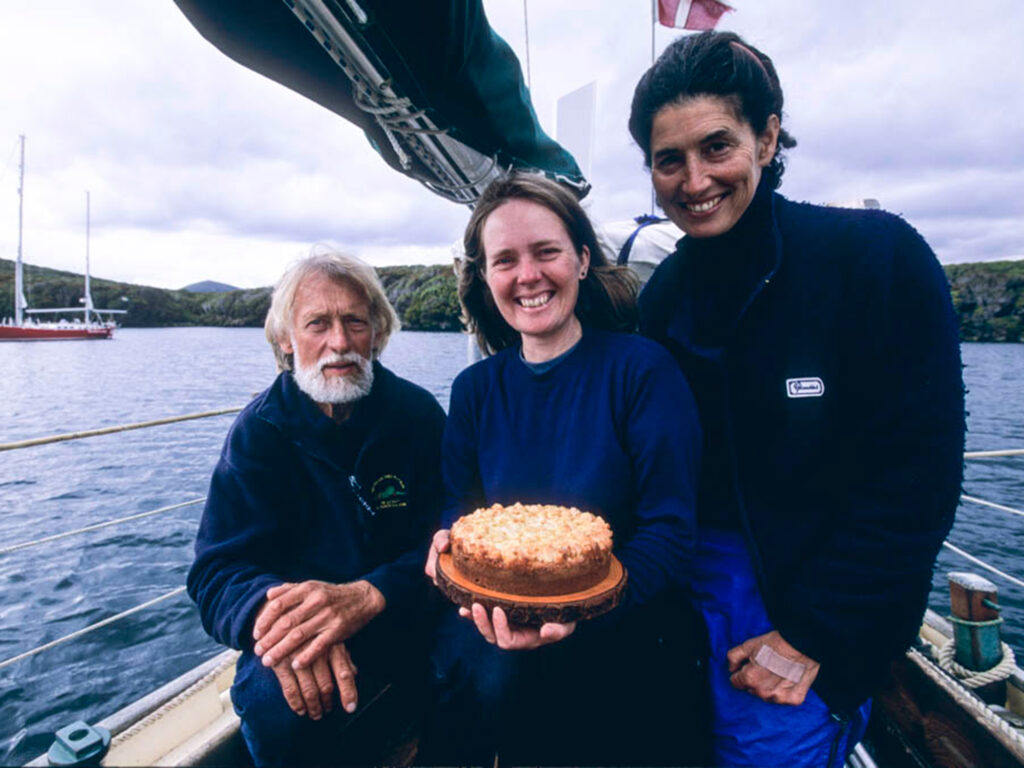
Rolf died at 87 years old on this year’s summer solstice—the day when the sun at the ends of our world shines in its prime. Thank you, Rolf, and thank you, Deborah, for guiding me onto my path.
The post Farewell to an Antarctic Legend: Rolf Bjelke appeared first on Cruising World.

